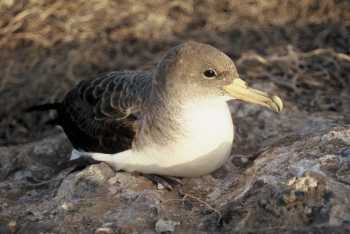Pedro Rodrigues (Department of Biology, University of the Azores, Portugal) and colleagues, writing in the European Journal of Wildlife Research, have looked at the effects of light pollution on Cory's Shearwaters Calonectris diomedea breeding in the Azores.
The paper's abstract follows:
"Global economic and population growth increase the extent and intensity of artificial night lighting. From an ecological perspective, this is light pollution, which causes changes in reproductive physiology, migration and foraging of many species and ultimately leads to loss of biodiversity. Some seabirds are intimately linked with the light features of their environments because they are nocturnally active. We report light-induced groundings of Cory's shearwater (Calonectris diomedea) during a 2-year study (2008 and 2009) in São Miguel Island, in the Azores archipelago, and investigate the spatial correlation of locations of grounded birds with an annual composite of remotely sensed stable lights. Results indicate that 16.7% of fledglings are attracted to lights. The exposure of shearwater colonies in the study area to artificial night lighting is low overall. Four colonies account for 87% of the grounded birds. The distance each bird was found from the closest colony was best explained by the ratio of the satellite-measured light levels at the grounding spot to the light levels at the assigned colony of origin. These results demonstrate that satellite-observed nighttime lights are sufficient to assess risk to marine birds at the scale of oceanic islands and indicate their utility for monitoring the effectiveness of programs to manage lighting to reduce risk for these species and conducting global assessments of species vulnerability. To minimize the impact on Cory's shearwater and other marine birds, we recommend measures such as reduction and control of lighting intensity near colony locations, while continuing and re-enforcing rescue campaigns."

Cory's Shearwater. Photograph by Paulo Catry
Reference:
Rodrigues, P., Aubrecht, C., Gil, A., Longcore, T. & Elvidge, C. 2012. Remote sensing to map influence of light pollution on Cory's shearwater in São Miguel Island, Azores Archipelago. European Journal of Wildlife Research 158: 147-155.
John Cooper, ACAP Information Officer, 25 March 2012

 Français
Français  English
English  Español
Español